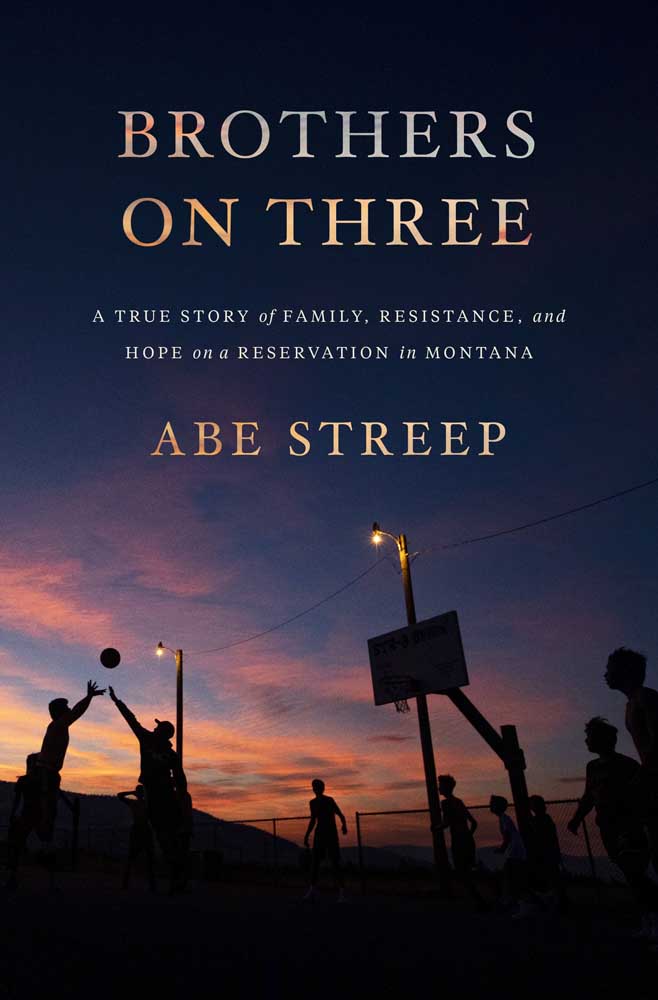‘Brothers on Three’ author to discuss round ball book at Roundabout
Published 3:45 pm Wednesday, September 29, 2021

- BOT_12-14-20
In 2017, journalist Abe Streep covered a Montana high school basketball team’s first-ever championship in an in-depth New York Times Magazine article, “What the Arlee Warriors Were Playing For,” published in 2018.
“The form that that article took was a season with the team, more or less, and what they did during their astonishing championship run,” Streep explained by phone earlier this week. The New Mexico-based writer has penned a book, “Brothers on Three.” In it, he takes an even deeper dive into the team, composed of members of Montana’s Flathead Indian Reservation, and the impact its first championship season had on the tiny community of Arlee.
The team certainly knew, or learned all about, overcoming obstacles, said Streep, who will be at Roundabout Books in Bend Wednesday to promote the book, which has been called “a page-turner and beautifully told … exceptional (in) its embrace of the texture, emotion, and drift of Indian life.”
“When they would play, they would say ‘Brothers on three,’ or ‘Brothers on three, family on six.’ The team was representative of the community. It also galvanized the community,” Streep said. “The games were gathering places, and they were just thrilling. The Arlee Warriors won a game by maybe 40 points, another game by 70 points.”
The team’s players, some of whom have gone on to play college ball, won games “on their own terms, not compromising, and relying on one another,” Streep said. He writes in the book that the team, with the addition of a key role player in shooting guard Will Mesteth Jr., turned into “something formidable, a pressing, blitzing group that outscored opponents in dizzying runs.”
The Warriors and their unprecedented season united a community struggling with a suicide cluster, which the Centers for Disease Control defines “as a group of suicides or suicide attempts, or both, that occur closer together in time and space than would normally be expected in a given community.”
Among those who’d taken their own lives were family members and others close to the team. At practice, Streep writes, “the boys started calling out the names of those they were playing for. It was a wild, building feeling — ‘like cooking with jet fuel,’ according to a senior named Ivory Brien, who was Amskapi Pikuni (Blackfeet) and Apsáalooke (Crow). ‘We’re not just playing for ourselves, we’re playing for this community. And specific members of the community.’”
“What the team did was take it upon themselves to try to discuss the issue and stand with the youths of the Flathead Indian Reservation to discuss mental health, suicide prevention, and so the team became a lot — this team was always a lot more than basketball, I think,” Streep said. “And when they did that, they kind of took it to a different level. … What they did was start to have conversations between people, and normalize conversations, and have their voices be heard.”
“For me, that team represented, I think, all that sports can be,” Streep said. “Not only did they while playing a distinctive, thrilling type of basketball that is often misunderstood, but they also used their success to lift up their community at a difficult time, at the same time.”
What: “Brothers on Three” author Abe Streep in conversation with Sierra Crane Murdoch, in-person or tune in via Zoom
When: 7 p.m. Wednesday
Where: Hybrid event, in-person Roundabout Books, 900 NW Mt. Washington Drive, Bend, or watch via Zoom
Contact: roundaboutbookshop.com or 541-306-6564








